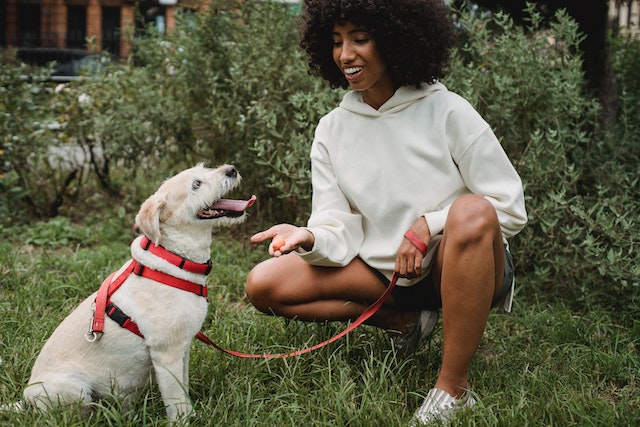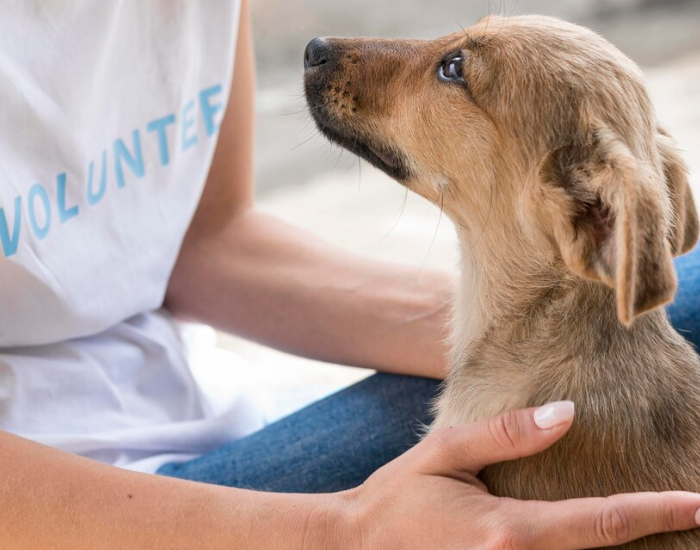- Step 1: Choose the Right Breed
- Step 2: Socialize Your Dog
- Step 3: Basic Obedience Training
- Step 4: Specific Therapy Training
- Step 5: Get Your Dog Certified
- Step 6: Introducing New People and Places
- Step 7: Practicing Good Manners
- Step 8: Training for Specific Tasks
- Step 9: Preparing for Evaluations
- Step 10: Continuing Education
Dogs have always been known to be man’s best friend. Apart from being our loyal companions, dogs also have therapeutic qualities that can help improve our physical and mental health. This is why they are used as therapy dogs in various settings, including hospitals, schools, nursing homes, and mental health facilities. If you are a dog lover and want to train your furry friend to be a therapy dog, there are several steps you need to take to ensure that they are well-prepared for this important role. In this article, we will discuss how to train a therapy dog in the UK.
Step 1: Choose the Right Breed
The first step in training a therapy dog is to choose the right breed. While any dog can be a therapy dog, some breeds are better suited for this type of work than others. Therapy dogs must be friendly, calm, and well-behaved. They should also be comfortable around people and able to handle different situations without becoming anxious or aggressive.
Some of the best breeds for therapy work include Golden Retrievers, Labradors, Poodles, and Cocker Spaniels. These breeds are known for their friendly and gentle nature, which makes them perfect for working with people who may be dealing with physical or emotional challenges.
Step 2: Socialize Your Dog
Socialization is an important part of training a therapy dog. It involves exposing your dog to different people, environments, and experiences so that they become comfortable and well-adjusted. Socialization should begin as early as possible and continue throughout your dog’s life.
Take your dog to different places such as parks, shops, and public areas where they can interact with people and other animals. This will help your dog become comfortable in new situations and develop social skills. You can also enroll your dog in obedience classes or work with a professional dog trainer to help with socialization.
Step 3: Basic Obedience Training
Basic obedience training is a fundamental part of therapy dog training. Your dog should be well-behaved and able to follow basic commands such as sit, stay, come, and heel. These commands will be essential when working with patients and clients, as well as in public settings.
Training sessions should be short and consistent, with plenty of positive reinforcement. Use treats, praise, and toys to reward your dog for good behavior. Avoid using harsh punishment, as this can be detrimental to your dog’s training and emotional well-being.
Step 4: Specific Therapy Training
Once your dog has mastered basic obedience training, you can start working on specific therapy training. This involves teaching your dog skills that will be useful in a therapeutic setting. For example, your dog may need to learn how to be calm and still during petting or brushing, or how to be patient and attentive during a therapy session.
Specific therapy training should be tailored to the type of work your dog will be doing. For example, a therapy dog working in a hospital may need to be comfortable with medical equipment and procedures. A therapy dog working with children may need to be playful and energetic.
Step 5: Get Your Dog Certified
Certification is not mandatory for therapy dogs in the UK, but it is highly recommended. Certification can help ensure that your dog is well-trained and suitable for therapy work. It can also provide liability protection in case of any incidents.
Step 6: Introducing New People and Places
One of the most important parts of training a therapy dog is socialization. Your dog should be comfortable around a wide variety of people and in different environments. This means that you will need to expose your dog to new people and places on a regular basis.
Start by introducing your dog to people and places that are calm and quiet. Gradually increase the level of activity and stimulation as your dog becomes more comfortable. Always reward your dog for good behavior and never force them to do something that they are uncomfortable with.
Step 7: Practicing Good Manners
Good manners are essential for a therapy dog. Your dog should be able to walk calmly on a leash, sit, stay, come when called, and be comfortable around other dogs.
You can practice these skills at home and in public places. Use positive reinforcement techniques such as treats and praise to encourage good behavior. Consistency is key, so make sure that you practice these skills regularly.
Step 8: Training for Specific Tasks
Therapy dogs are often trained for specific tasks, depending on the type of therapy they will be providing. For example, a therapy dog that will be working with children in a hospital may be trained to perform tricks or play games to help distract and entertain the children.
Talk to the organization or facility where you will be working as a therapy dog team to determine what specific tasks your dog should be trained for. You may need to attend additional training sessions to learn how to train your dog for these specific tasks.
Step 9: Preparing for Evaluations
Most therapy dog organizations require dogs to pass a behavior evaluation before they can become certified. These evaluations assess the dog's temperament, obedience, and ability to handle different situations.
Make sure that you understand the requirements for the evaluation and practice the skills that will be assessed. You may also want to work with a professional dog trainer or behaviorist to help prepare your dog for the evaluation.
Step 10: Continuing Education
Training a therapy dog is an ongoing process. Even after your dog is certified, you will need to continue to work on their skills and provide ongoing training and socialization.
Attend training sessions, workshops, and conferences to learn new techniques and stay up-to-date on the latest trends in therapy dog training. This will help you provide the best possible therapy dog services to those who need them.
Conclusion
Training a therapy dog can be a rewarding experience for both you and your dog. By following these tips, you can prepare your dog for a successful career as a therapy dog in the UK.
Remember, training a therapy dog takes time and patience. Start early, be consistent, and always use positive reinforcement techniques. With the right training and support, your dog can make a positive impact on the lives of others.












